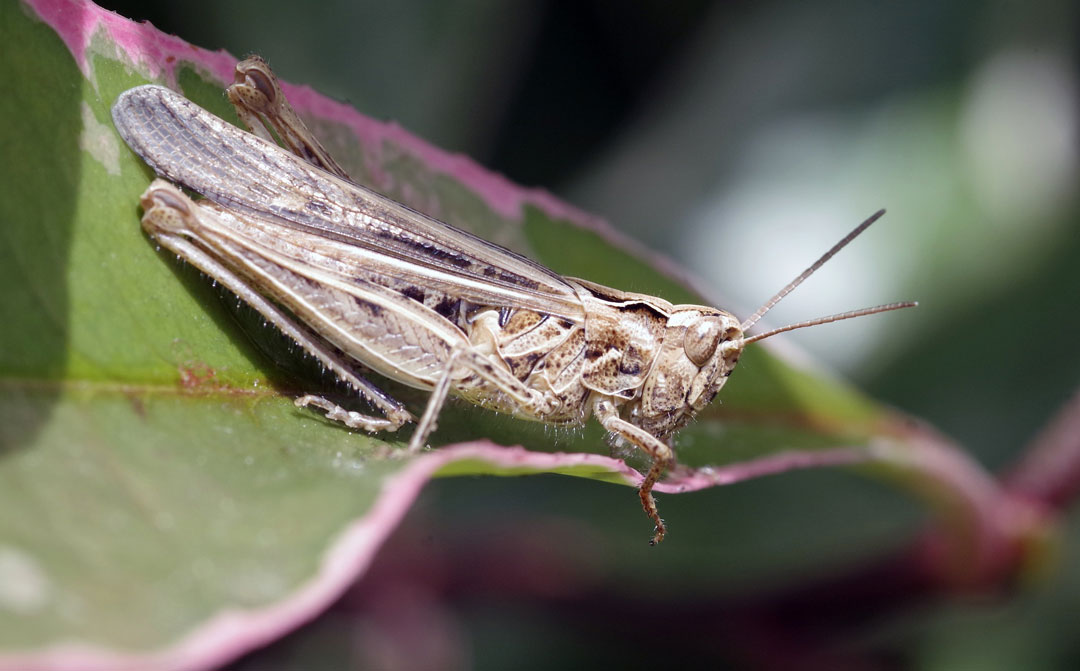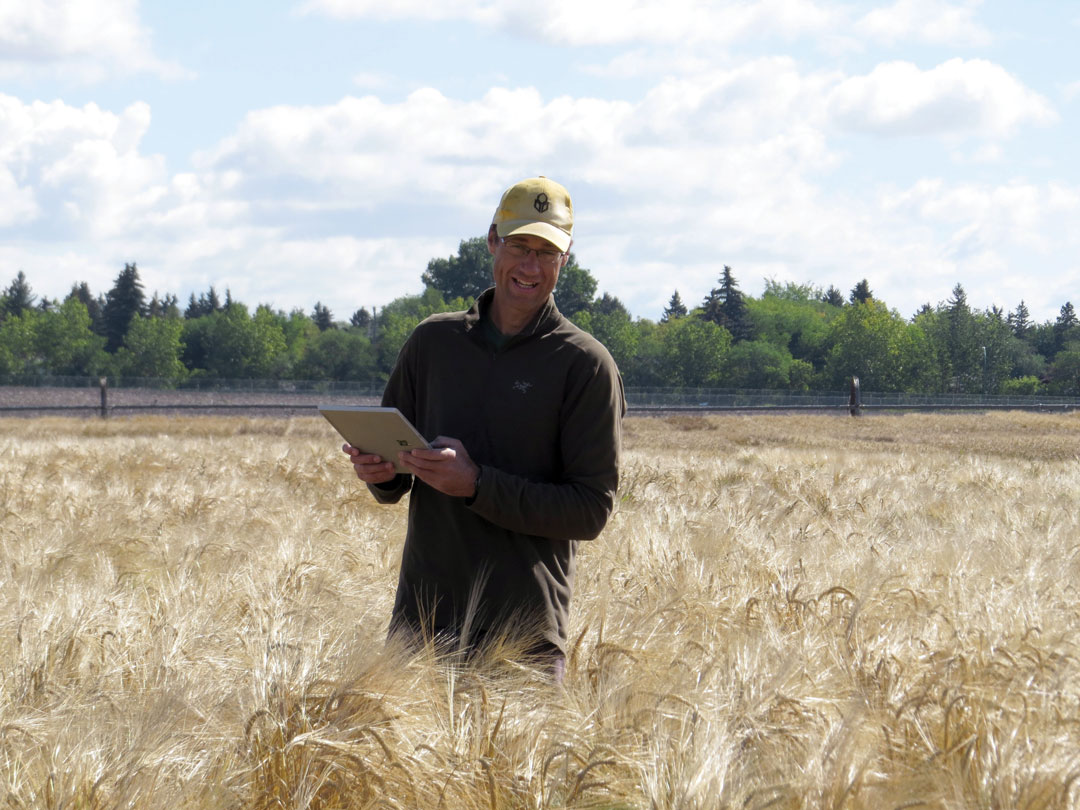DRY PRAIRIE WEATHER FAVOURING GRASSHOPPERS
BY IAN DOIG • PHOTO BY PIXABAY
Meghan Vankosky is a field crop entomologist with Agriculture and Agri-Food Canada at the Saskatoon Research and Development Centre. She conducts research into integrated pest management and biological control as well as the ecology of insect pests of field crops. She is also the chair of the Prairie Pest Monitoring Network (PPMN), the central aim of which is to help guide farmers to scout their fields effectively and make informed pest-control decisions. Typically, in late January or early February, the organization produces its annual grasshopper forecast based on population surveys conducted in late summer of the previous year.
GrainsWest: What is the general threat level for grasshoppers in Alberta and across the Prairies and how does the PPMN gather that information?
Meghan Vankosky: Every year we do an annual survey at the end of the growing season to forecast grasshopper risk in the next growing season. The PPMN forecast map estimates risk between years based on egg-laying adult populations present in the late summer and early fall. Eggs laid in summer of one year will hatch the next spring, so the more adult grasshoppers there are, the greater the risk is.
Based on the survey from 2018, there were not many adult grasshoppers in Manitoba, Alberta and Saskatchewan, so the risk across most of the Prairies was forecast to be quite low in 2019. At the same time, dry conditions are optimal for grasshopper growth and development, so I think we are seeing more grasshoppers this year than we anticipated based on the results of the 2018 survey.
GW:How does the grasshopper threat compare to past years?
MV:In Saskatchewan, we’re seeing more grasshoppers this year than we anticipated based on the forecast and compared to the numbers we had seen in the last two years. That reflects some anecdotal reports I’ve been hearing from across the Prairies, and from data collected at grasshopper sentinel sites in Saskatchewan.
Flea beetles have been our big story this year, but grasshoppers are a concern in some areas, too.
GW:Can you shed some light on the unique grasshopper population that exists in north-central Alberta?
MV:When we look at our historical maps, there’s a swath through north-central Alberta, parts of the Peace River region and then moving down through the aspen parkland and into the northern extent of where crops are grown in Saskatchewan that seems to be a little bit off. When we predict that there are going to be low populations of grasshoppers in those areas in a given year, populations often end up being higher than expected, and vice versa.
The cause of this is still a mystery. It seems there’s something going on there that’s unexpected and it’s something we’re trying to get to the bottom of. Our working hypothesis is that there is a grasshopper species in that area that requires two winters for egg development, compared to other species that require one year. Because of that, this grasshopper species doesn’t emerge as we expect it to, based on the forecast for all of the other species.
GW:Would you characterize that area as a hotspot?
MV:I would characterize it as an area where some extra scouting is needed in the course of a growing season just to know for sure what’s going on. So, maybe it is an area where we need to exercise a little bit more caution.
To view the PPMN 2019 grasshopper forecast map, visit prairiepestmonitoring.blogspot.com/p/risk-warning-maps.html.








Comments